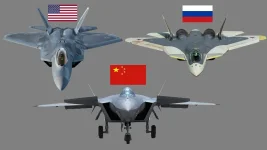
Just days before Indian Army Day, China conducted a combat drill in a high-altitude plateau area, underscoring its military focus on preparedness and logistical support in extreme conditions.
This exercise comes at a delicate time, as India and China navigate a fragile peace along the Line of Actual Control (LAC) following a breakthrough disengagement agreement reached in October 2024.
The drill, spearheaded by a regiment of the People's Liberation Army (PLA) Xinjiang Military Command, showcased advanced military technology, including all-terrain vehicles, unmanned systems, drones, and exoskeletons designed to enhance soldier mobility and endurance.
This display of military capability has prompted increased alertness among Indian armed forces along the India-China border.
Background: The India-China Disengagement Agreement
The disengagement agreement marked a crucial step towards easing tensions that had escalated since the 2020 Galwan Valley clashes, which resulted in casualties on both sides.The agreement allowed for the resumption of patrolling in sensitive areas like Depsang and Demchok, long-standing flashpoints along the LAC. High-level talks between Indian and Chinese officials followed, focusing on a broader resolution to the border issue.
However, despite these positive diplomatic developments, the situation remains sensitive, with both nations maintaining significant troop deployments in the challenging high-altitude environment.
Significance of China's Combat Drills
China's recent exercise highlights its strategic intent to enhance operational readiness in high-altitude environments, particularly in the Xinjiang region bordering Ladakh. The inclusion of cutting-edge technologies, such as unmanned vehicles and drones, reflects Beijing's focus on modernizing its military for asymmetric warfare.These drills serve not only as training exercises but also as strategic posturing, signalling China's ability to rapidly mobilize and sustain forces in contested regions. The use of exoskeletons, for example, could provide PLA soldiers with a tactical advantage in overcoming the physiological challenges of high-altitude warfare.
Implications for India
For India, these developments underscore the importance of maintaining vigilance and continuing its own military modernization efforts in Ladakh. The Indian Army has been conducting winter warfare exercises, upgrading infrastructure, and deploying advanced surveillance systems to counter any potential Chinese aggression.While the resumption of patrolling in certain areas signals a thaw in relations, China's continued military drills suggest that the path to lasting peace remains complex. The persistence of such activities indicates that both nations are maintaining a cautious approach, preparing for all contingencies despite ongoing peace talks.
India's Preparedness Along the LAC
India has significantly bolstered its preparedness along the LAC in response to these challenges. The Indian Army has enhanced its high-altitude warfare capabilities through rigorous combat exercises, modernized its surveillance systems, and fast-tracked infrastructure development along the border. The induction of advanced weaponry further strengthens India's defence posture.These measures, combined with joint exercises with allied nations, demonstrate India's commitment to safeguarding its territorial integrity and deterring aggression along the LAC.
For India, it is crucial to view these developments within a broader context, emphasizing the need for continued vigilance, modernization, and proactive diplomacy to ensure lasting peace and stability along the LAC.


